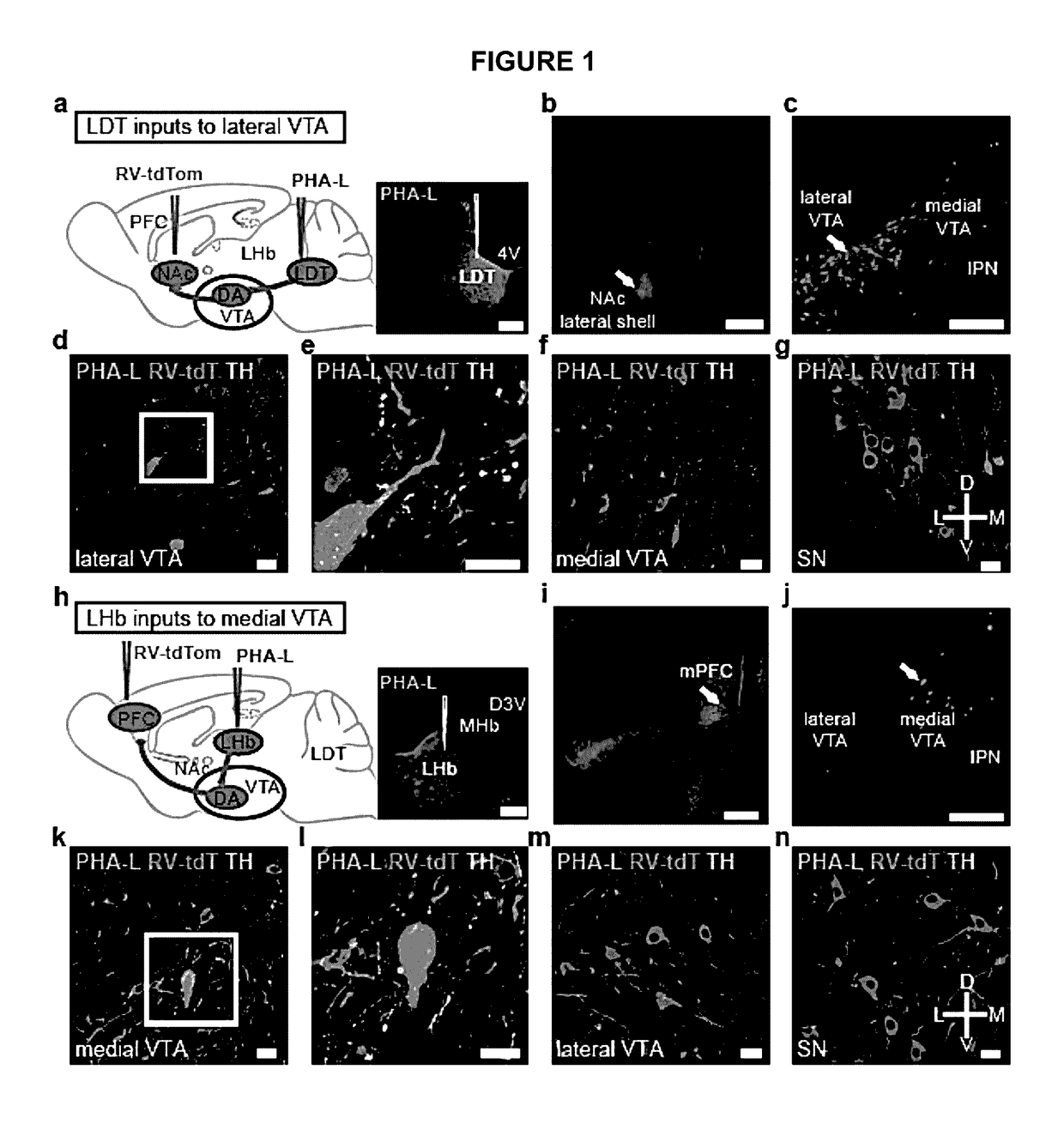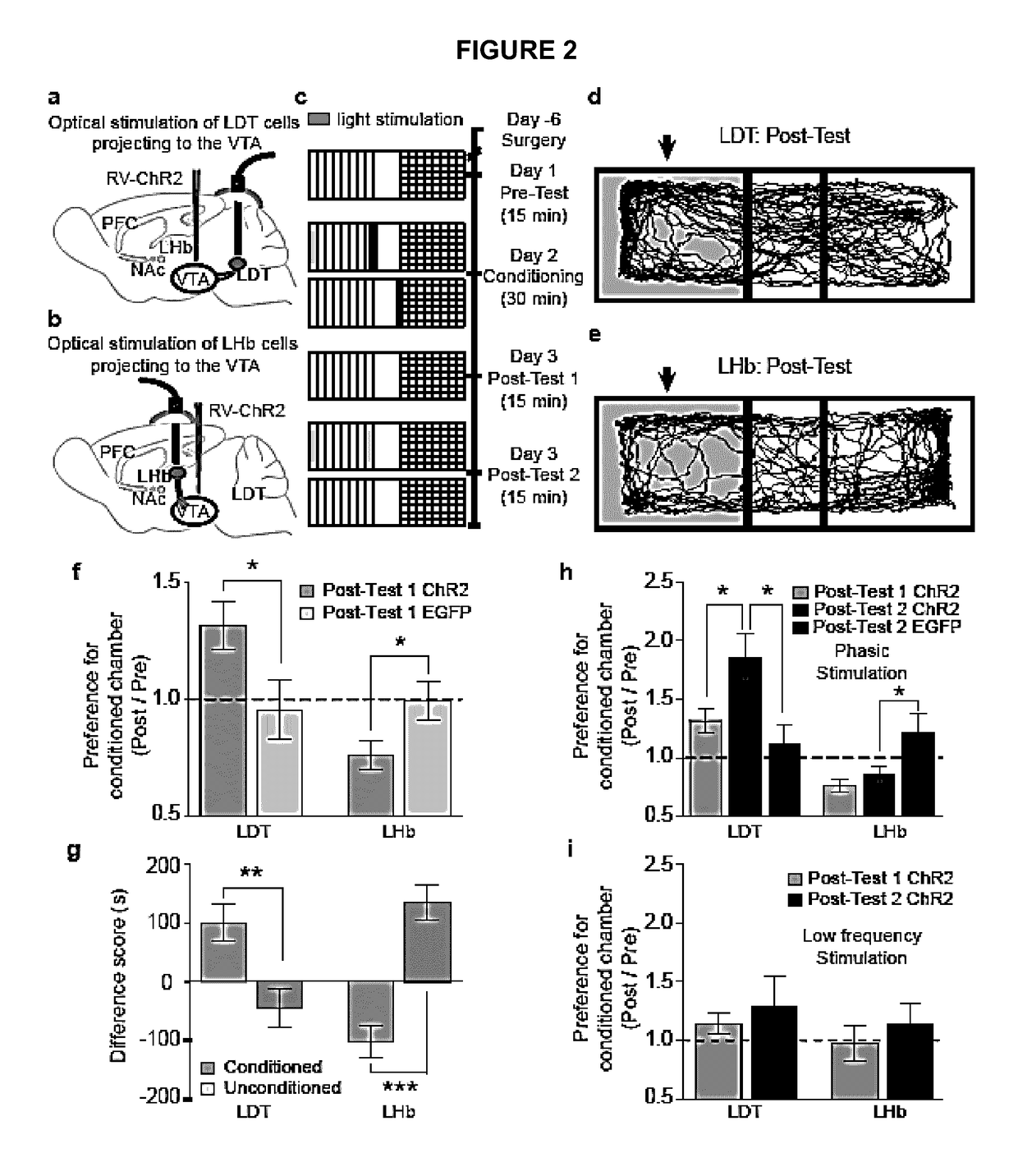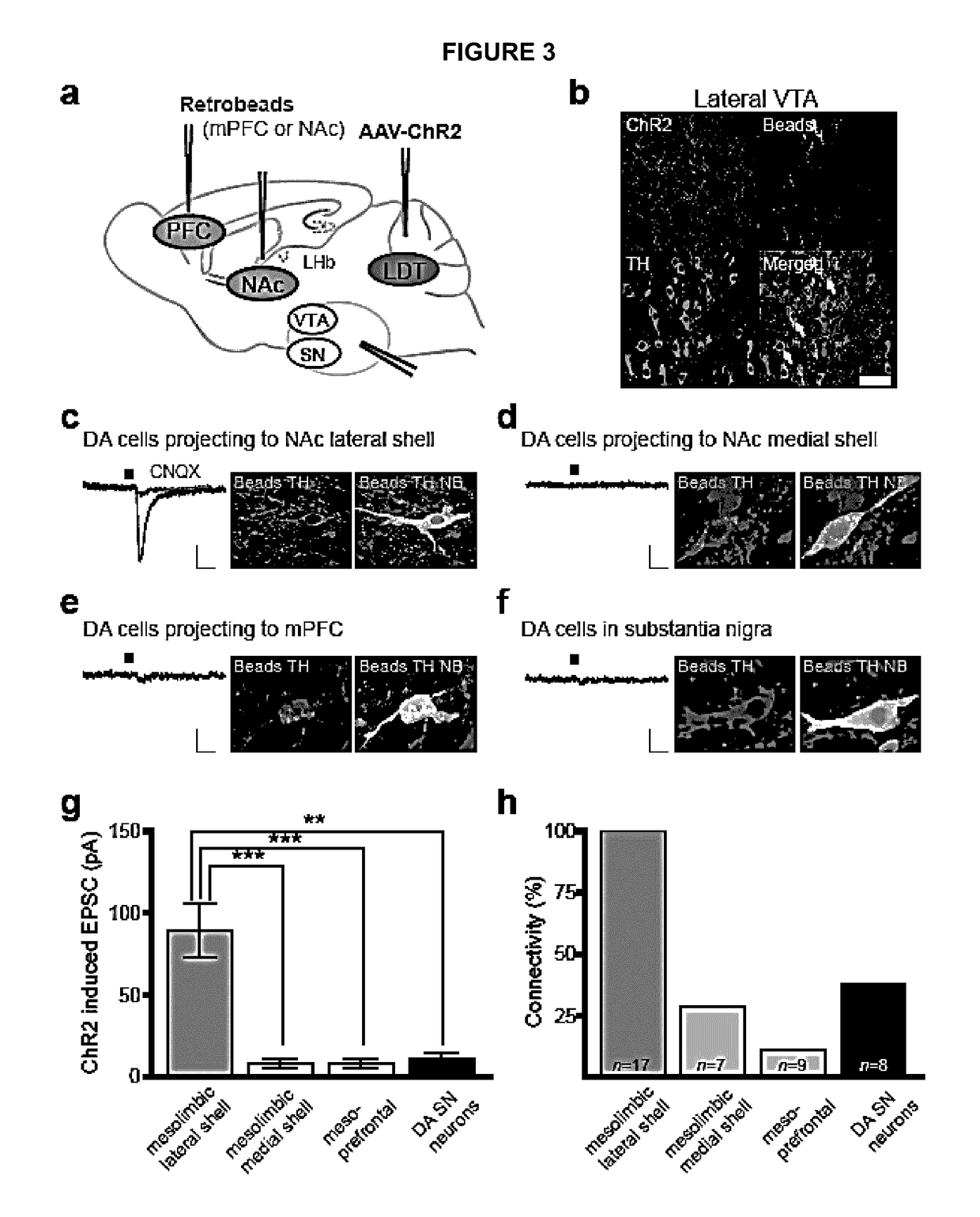Optogenetic control of inputs to the ventral tegmental area
a technology of ventral tegmental area and inputs, applied in the direction of genetic material ingredients, peptide/protein ingredients, therapy, etc., to achieve the effect of improving reward- or aversive-related behaviors
- Summary
- Abstract
- Description
- Claims
- Application Information
AI Technical Summary
Benefits of technology
Problems solved by technology
Method used
Image
Examples
example 1
Input-Specific Control of Reward and Aversion in the VTA
Materials and Methods
[0129]Animals.
[0130]Male adult (10-12 weeks of age) C57Bl6 (Charles River) or TH-Cre [B6.Cg-Tg(Th-cre)1Tmd / J; Jackson Laboratory] mice were used for all experiments. All procedures complied with the animal care standards set forth by the National Institutes of Health and were approved by Stanford University's Administrative Panel on Laboratory Animal Care.
[0131]Virus Generation.
[0132]The adeno-associated viruses (AAVs) used in this study were generated as previously described38 either by the Deisseroth lab (AAV-ChR2) or the Stanford Neuroscience Gene Vector and Virus Core (AAV-DIO-RVG). Rabies virus (RV) was generated from a full length cDNA plasmid containing all components of RV (SAD L16)39. We replaced the rabies virus glycoprotein with enhanced green fluorescent protein (EGFP), tdTomato or ChR2-H134R fused to enhanced yellow fluorescent protein (EYFP) to generate RV expressing EGFP (RV-EGFP), tdTomato (...
PUM
| Property | Measurement | Unit |
|---|---|---|
| wavelength | aaaaa | aaaaa |
| wavelength | aaaaa | aaaaa |
| wavelength | aaaaa | aaaaa |
Abstract
Description
Claims
Application Information
 Login to View More
Login to View More - R&D
- Intellectual Property
- Life Sciences
- Materials
- Tech Scout
- Unparalleled Data Quality
- Higher Quality Content
- 60% Fewer Hallucinations
Browse by: Latest US Patents, China's latest patents, Technical Efficacy Thesaurus, Application Domain, Technology Topic, Popular Technical Reports.
© 2025 PatSnap. All rights reserved.Legal|Privacy policy|Modern Slavery Act Transparency Statement|Sitemap|About US| Contact US: help@patsnap.com



